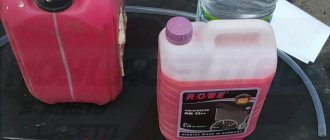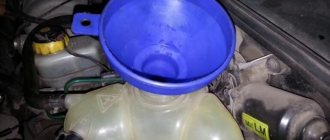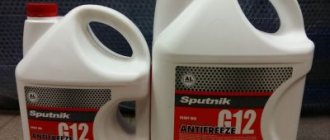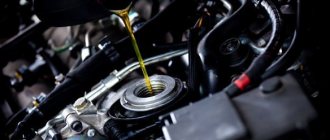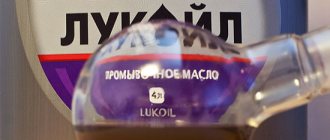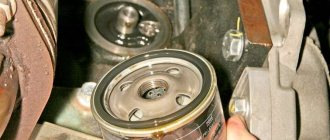The design of any car requires a cooling system. It helps to avoid overheating of the vehicle engine. One of its main components is coolant, which must be changed periodically. Timely replacement of antifreeze with Lacetti will ensure efficient engine operation. We will explain how the procedure is carried out in this article.
What kind of coolant is used
The cooling system of a Lacetti hatchback is operated together with high-quality antifreeze made from ethylene glycol. It is better to pour it into the expansion tank. Silicate is the main element in antifreeze, which is designed to serve as protection against rust.
Antifreeze is sold in concentrated form. If the old one is still flooded, then it should be removed from the tank. For this reason, before using the concentrate, add purified water in a 1:1 ratio. At low temperatures of −40 degrees and below, the liquid must be poured in a ratio of 3:2.
How to prepare antifreeze
It is best to use coolant concentrate. The fact is that after flushing the circulation circuit, a certain volume of distillate remained in the engine, about 1.5-2 liters. If you pour fully prepared antifreeze into the cooling system, the distilled water remaining in the engine will noticeably dilute the prepared antifreeze, worsening its performance characteristics.
Regarding concentrated antifreeze, this type of coolant must be diluted with distilled water. This is what is needed in this case.
As a rule, the optimal proportions for preparing antifreeze are indicated on the label of the canister with the concentrate. Most often, concentrated coolant must be diluted with water at a ratio of 1:1 . If the antifreeze is changed to a Chevrolet Lacetti with a 1.4-1.6 engine, where the capacity of the circulation circuit is 7.2 (l), then in this case you will need 3.6 (l) of distilled water and 3.6 (l) of coolant concentrate. From the volume of water, it is necessary to subtract the volume of distillate that remains in the engine after flushing.
If during flushing the coolant circuit, 5.2 (l) came out, this means that exactly 2 (l) of distilled water remains in the engine.
Preparing antifreeze. In a clean plastic container, mix 1.6 liters of distilled water and 3.6 liters of concentrate. Pour the resulting coolant mixture into the expansion tank. The concentration of fresh antifreeze will be increased, but it will quickly return to normal when the 2 liters of distillate remaining after washing are added to it.
Coolant color
Car owners who have not previously carried out the antifreeze replacement procedure often ask about the color of the liquid. Even experienced car enthusiasts often don’t know the answer. The opinion of most people is this: the color in which the cooling liquid is painted is an indicator of its technical properties. But it is fundamentally wrong.
It is worth remembering that the color of the coolant does not affect the technical qualities in any way. The opinion described above has taken root in the public consciousness due to the marketing moves of companies. Companies want their product to be different from similar products on the market made by competitors. Today you will find antifreeze on sale in various colors: from standard blue to gray-brown-crimson.
However, by the color of the liquid, you can determine the composition and dyes added to the mixture. The toxic neon tint of some of these products is a sign of the addition of an additive with fluorescent properties. It plays an important role in finding antifreeze leaks. By illuminating the space under the hood with ultraviolet light, the technician can easily determine the causes of the breakdown.
Many people use orange, yellow and red coolant. The service life is approximately five years or 200 thousand kilometers. It is the shade of the liquid that will help you distinguish the desired antifreeze with an increased service life from others.
Choosing antifreeze for the Chevrolet Lacetti
The original coolant produced by General Motors is Genuine Longlife Dex Cool. Branded coolant is quite difficult to find on sale, so car owners often resort to purchasing its direct analogue - AC DELCO DE X-COOL Extended Life Antifreeze/Coolant.
In cars produced before 2011, it is recommended to use G12+ coolant. The service life of the fluid is 5 years, but car owners recommend changing it after 3 years.
In Chevrolet Lacetti cars after 2011 release, you need to use G12++ antifreeze. The service life of this antifreeze has been increased to 7 years.
Coolants G12+ and G12++ have similar performance characteristics and composition, therefore they are completely interchangeable. However, topping up is not recommended. If you intend to replace different types of antifreeze, then it is necessary to drain the entire volume of coolant and flush the circuit from the remnants of the old liquid.
Good third-party manufacturers of coolant for the Chevrolet Lacetti are the following companies:
- Chevron;
- AWM;
- G-Energy;
- Lukoil
- Ultra;
- GlasElf;
- Havoline;
- MOTUL;
- Freecor;
- Frostschutzmittel;
- VAG;
- FEBI;
- Zerex G;
- Freecor QR;
- Freecor DSC;
- Glysantin G 40.
When choosing antifreeze, it is necessary to take into account the fact that it is not only responsible for the function of heat removal. The components contained in the coolant provide lubrication of the pump, increasing its service life. In addition, the antifreeze must contain additives:
- reducing scale formation;
- corrosion inhibitors;
- allowing you to maintain your original performance characteristics of the coolant for the entire service life.
How often should you change antifreeze?
There are a number of recommendations regarding the issue of changing the refrigerant. The coolant should be changed every two years or after 30-40 thousand kilometers that the car has driven.
The antifreeze replacement time is determined based on the following characteristics:
- condition and mileage of the car;
- manufacturer;
- brand and quality of the cooling agent used;
- refrigerant that was previously used.
Liquids with silicate additives are changed every 2-3 years. The technical qualities of hybrid type antifreeze disappear within five years, and carboxylate type antifreeze remains for a period of 5 years or more, and replacement is not required.
At the moment, the market can also offer drivers carboxylate-based refrigerants that “work” for a mileage of 100 thousand kilometers or more. But such products are still few in number.
What are the consequences of untimely coolant replacement?
Some car owners do not think about the importance of replacing the coolant and flushing the tank. In reality, this process not only guarantees normal engine operation, but also leads to an increase in the service life of some engine modules and assemblies. In addition, improper monitoring of the quality of the refrigerant and the condition of the cooling system as a whole cause unpleasant breakdowns that require repair.
A lack of antifreeze in the expansion tank means regular overheating of the engine, which inevitably leads to a number of malfunctions:
- piston ring corrosion;
- burnout of the piston head and valve head;
- changing the shape of the cylinder head;
- burnout of the cylinder head gasket;
- curvature of the landing surfaces of a number of mounted units;
- other annoying problems that require intervention, attention and significant financial investments.
How much antifreeze is needed
Don’t go overboard with how many liters of antifreeze you pour into the Lacetti, and use exact numbers. Tank capacity - 7.2 liters. But you don't need to fill it out completely.
for Chevrolet Lacetti repair
I filled it with G11 (also from concentrate, it seems) it was about -20, I tried to start it... it worked and it started running through the tank. I dragged it into a warm box, it warmed up in a couple of hours, we drained this cocoa and filled it with Felix, everything is OK and the flight is normal.
Antifreeze cleaner AGA-R30 is designed for flushing cooling systems of gasoline and diesel engines of cars in normal operation. I filled in this miracle cleaner for a week in the hope of at least a little dissolving what was clogging the stove, but after driving only 250 km I discovered that the air flow had become almost hot. In terms of temperature, the heater return hose is in no way inferior to the inlet hose, and this cannot but rejoice. I plan to drive for a couple more days and go to replace the antifreeze with rinsing with distilled water and laurel.
Over time, the coolant loses its properties, so in order to maintain proper heat transfer of the Chevrolet Lacetti engine, it must be changed. The replacement operation is simple and anyone can do it with their own hands.
Required tools and materials
In order to change the coolant on a Chevrolet Lacetti, you will need the tools listed in the table below.
| Tools and materials | Note |
| Screwdriver | Flat blade |
| Coolant drain container | Volume up to 9 liters |
| Distilled water | Required for diluting concentrated antifreeze. |
| When changing the type of antifreeze, you must first flush the circuit with distilled water. This will require a liquid volume of 7 to 13 liters. | |
| Pliers | Can be replaced with pliers |
| Rubber tube | Diameter 10 mm |
Replacement frequency, what antifreeze to fill
The frequency of replacing antifreeze in a new car is regulated in the maintenance card. As for used cars, replacement should be carried out based on the recommendations of the coolant manufacturer.
For example, if you use original GM Dex-Cool Longlife coolant in a Chevrolet Lacetti, then replacement should be done every five years. This is exactly the period stated by the manufacturer, and also guarantees the preservation of all properties.
The original product is available in the form of a concentrate; its complete analogue is Havoline XLC. You can also use an analogue in the form of a finished product Coolstream Premium, produced at the Russian enterprise TECHNOFORM.
You can also pay attention to other manufacturers, for example, FELIX Carbox antifreeze has won good trust among car enthusiasts. The main thing to remember is that the color is just a dye, and the liquid must be selected according to tolerances. If the fluid has GM approval, then it can be used in the cooling system of this vehicle.
How much antifreeze is in the cooling system, volume table
| Model | Engine capacity | How many liters of antifreeze are in the system | Original liquid / analogues |
| Chevrolet Lacetti | gasoline 1.4 | 7.2 | Genuine General Motors Dex-Cool Longlife |
| gasoline 1.6 | Havoline XLC | ||
| gasoline 1.8 | 7.4 | Coolstream Premium | |
| gasoline 2.0 | FELIX Carbox |
Leaks and problems
The Chevrolet Lacetti cooling system does not have any serious problems, but when replacing it is worth paying attention to the condition of the pipes and clamps. If microcracks or swelling are detected, they should be replaced to prevent leakage in the future.
Some users sometimes report leakage from under the thermostat, which in most cases indicates wear of the gasket. There were cases of cracks in the expansion tank, which was also accompanied by a leak.
For reliable and long-term operation of the power plant, it is necessary to maintain its temperature within a narrow range. A cooling system is used to absorb and dissipate heat. Its working fluid is antifreeze. The life of the power unit depends on its timely replacement and compliance with recommendations for selection.
Step-by-step replacement of coolant on a Chevrolet Lacetti
- Open the hood and initially unscrew the cap of the expansion tank.
- Then you need to crawl under the car and put a plastic tube (10 mm in diameter) on top of the drain valve, or you can use a hose. This procedure must be carried out in order not to spill coolant on the ground. If this is not essential, then simply take a larger container (for example, an ordinary basin, or an old 10 liter canister of something)
